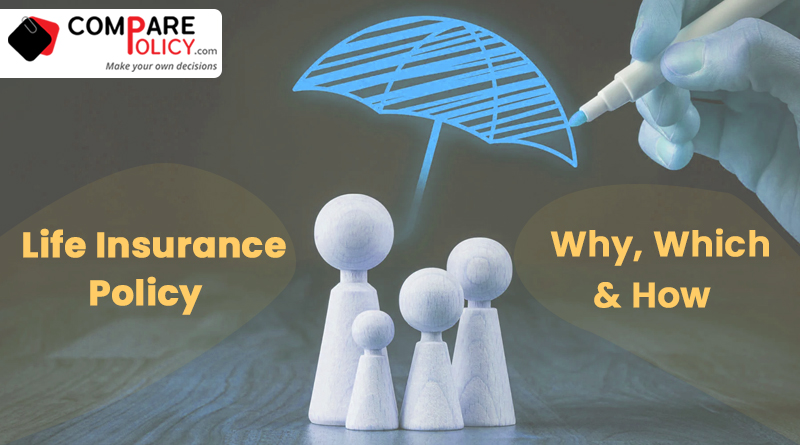Life Insurance Policy: Why, Which & How?
Being a caring father, and a responsible husband you have successfully played your part of the job. But have you ever thought about the consequences should an unfortunate happen to you? Will your loved ones be able to cope with the financial crisis in your absence? If these questions worry you, you must provide a financial-safety net to them with life insurance policies.
Rohit, a resident of Delhi, is a big fan of the life insurance policy. The payout of his father’s life insurance policy saved him and his family from dipping into a huge financial crisis. Pre-mature death of Rohit’s father left his family shocked. It’s true that his father could not be brought back, but a life insurance policy taken by his father served as a safety net for Rohit and his family. Now, Rohit is working for a software company in Gurgaon after completing his B.Tech and happily living with his family.
The only reason for Rohito’s present happy life is the life insurance policy his father had taken at an early age. While it’s obvious that we need to protect our family’s financial future, we also need to be cautious, logical, and analytical while buying insurance products. It’s unfortunate that despite the availability of many good insurance aggregates’ websites and financial advisers, many of us buy wrong and worthless products just for saving taxes and get disheartened with products that don’t meet their expectations or fulfill the insurance needs.
Thus, the basic purpose of an insurance policy is defeated. Therefore, it’s always advisable not to through your hard-earned money on buying just any financial products. You need to do thorough research in order to educate yourself before reaching the final decision.
So far-term insurance policy is concerned; it’s the purest, simplest and cheapest cover. It provides optimum protection without any maturity benefit. Term Insurance policy comes in two different forms – (a) With Return of Premium and (b) Without Return of Premium.
With Return of Premium
Under this term insurance policy, the policyholder pays a premium for the stipulated period either monthly, half-yearly, yearly, or as a single premium. If the life insured survives the policy term, the policy returns the premiums after certain deductions.
The premium charged under this policy is normally higher than the plain term plan.
Without Return of Premium
Under this term insurance policy, the policyholder pays a premium for the stipulated period. In case of any eventuality of the policyholder within the policy period, the nominee gets the sum insured, and the policy terminates. But if the policyholder survives the policy period, the policy terminates without paying anything.
Generally, the premium rate of this policy is lower than the premium charged under With Return of Premium policy.
Through an illustration, I’m trying to make you informed about the two best term insurance policies. Premium rates are for 30 years old, non-smoker/non-tobacco users male, and Rs. 50 lacs Sum Assured.
| Key Features | Plans Name | |
|---|---|---|
| HDFC Life Click 2 Protect Plus | Aegon Religare iTerm | |
| Annual Premium | Rs. 5,500 * | Rs. 4,500 * |
| Death Benefit | Rs. 50 lacs | Rs. 50 lacs |
| Maturity Benefit | No | No |
| Guaranteed Surrender value | 70% of Remaining Term(Only for Single Premium option) | 70% of Remaining Term(Only for Single Premium option) |
| Policy Term | 10-40 Years | 5-40 Years or up to 75 Yrs. of age |
| Max. Entry Age | 65 Yrs. | 65 Yrs. |
| Max. Maturity Age | 75 Yrs. | 75 Yrs. |
| Premium Frequency | Monthly, Quarterly, Half-yearly, Annual, or Single Pay | Annual or Single Pay |
| Riders Available | Accidental Death Benefit in Extra Life option | Accidental Death Benefit, Waiver of Premium on Critical Illness, Critical Illness |
| Claim Settlement Ratio of The Insurer | 94% | 81% |
*Note: Above data is for illustration purposes only. The actual premiums and benefits may vary.
In the above illustration, you can clearly see that all key features and benefits offered by both plans are almost equal. But there is a huge difference of Rs. 1,000 in premium rate. The only reason I interpret is the brand value and difference in claim-settlement rations of the two companies.
You can either choose to pay Rs. 1,000 excess premium or can rely on the less newly entrant, the choice is yours.

